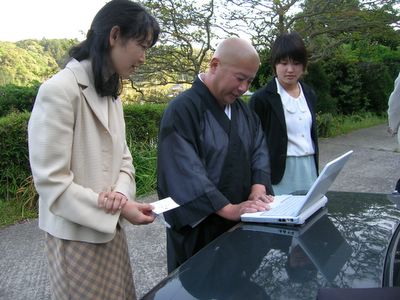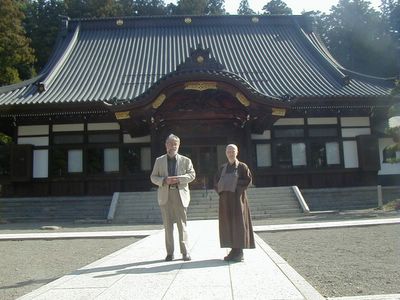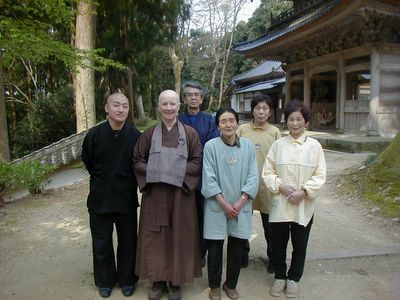This is the temple where Rev. Master Jiyu came in 1962 and the home temple of Master Seck Kim Seng who was her ordination master. I arrived here last afternoon having been met at K.L. airport by two women volunteers from this temple. One I had met previously in England in 2001 when she came with the Abbess, Seck Lee Seng, for the celebrations at Throssel in that year. What a jolly pair! After the usual greetings and luggage handling, everybody insists that I do not carry anything, we set off in the modern air conditioned car.
For as far as one can see there are Palm tree plantations, palm oil is extracted from the fruit of these trees. The roads are three lanes each way, fast moving and not too crowded. It took about two hours to drive to Malaka (I have seen that spelled several ways). No sooner had we arrived and I had made the customary bows to the main altar and bow to Master Seck Lee Seng (and had a shower) and we were off for a meal at a vegetarian restaurant. There were the five Chinese male monks who live here, several lay women, who either live here or are volunteers, and an elderly Chinese monk who was here for the Wesak Celebrations which happened the day before. Seck Lee Seng was there too of course who presided over the ordering and distribution of the food. There is so much I could write about from just being here 24 hours. There seem to be so many people around just in the kitchen alone. Gradually I am getting used to faces, know who speaks English, know who (more or less) lives here and what time things (generally) start. There is a wonderful family feel here.
As I am on a slow dial-up connection I will not write too much as it might take a long time to ‘upload’ and it is time for bed. I’ll be able to write more tomorrow hopefully. Enough to say thank you to those of you who post comments or have sent me emails letting me know you are following my progress. This encourages me to keep going with the writing.




